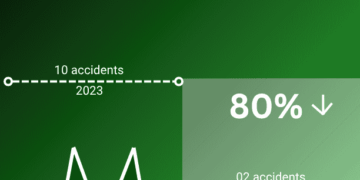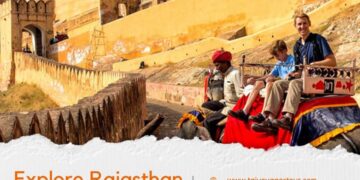Introduction to Trekking in Himachal Pradesh
Trekking in Himachal is not just about following trails through mountains; it’s about immersing yourself in the raw, unpredictable beauty of the Himalayas. This region of northern India is a magnet for those who seek something beyond the typical tourist path — something slower, deeper, and more connected to nature. Whether it’s a solo walk through apple orchards or a high-altitude push to a snow-covered pass, trekking in Himachal offers a rare kind of satisfaction.
The state’s terrain includes everything from pine forests to glacier-fed rivers, with quiet villages nestled between hills that stretch endlessly. Treks here cater to all types of hikers — from beginners looking for short weekend treks to seasoned adventurers pursuing multi-day journeys.
Why Trekking in Himachal is Unlike Anywhere Else
Trekking in Himachal is more than just hiking; it’s a deep interaction with terrain that constantly shifts — from meadows to moraines, from dense cedar forests to barren highlands. The Himalayas in Himachal are home to many ancient paths that have existed for centuries. Shepherds, pilgrims, and traders once used these routes — and now they lead trekkers into places untouched by crowds.
You won’t find highways or massive resorts here. You’ll find water straight from mountain streams, evenings lit by firewood, and stories shared under the stars. Each trail has its own voice, and every bend has something that humbles you. The physical effort, the silence, and the environment together create an experience that feels rare in today’s world.
Top Treks to Experience in Himachal
1. Hampta Pass Trek
One of the most popular routes for beginners, the Hampta Pass trek starts from Jobra and ends in Chatru. This trek is known for its changing landscapes — from forested slopes near Manali to the stark wilderness of Lahaul. The highlight is the pass itself, where you witness the shift from the green valleys of Kullu to the dry, almost Martian terrain of Spiti.
- Duration: 4–5 days
- Difficulty: Moderate
- Best Season: June to September
2. Bhrigu Lake Trek
Bhrigu Lake sits at around 14,000 feet and can be reached within a short 3-day trek from Gulaba near Manali. The lake holds mythological significance and is believed to be associated with the sage Bhrigu. The trail offers wide pastures, ridgeline views, and a deep sense of stillness.
- Duration: 3 days
- Difficulty: Easy to Moderate
- Best Season: May to October
3. Pin Parvati Pass
For seasoned trekkers looking for a challenge, the Pin Parvati Pass trek is a demanding journey that links the Parvati Valley in Kullu to the Pin Valley in Spiti. Trekkers pass through alpine meadows, cross glaciers, and brave river crossings. This is a test of endurance and preparation.
- Duration: 10–12 days
- Difficulty: High
- Best Season: July to September
4. Kheerganga Trek
This short trek is perfect for beginners or those with limited time. Starting from Barshaini, the trail leads to Kheerganga, where natural hot springs offer rest after the climb. The route is surrounded by oak forests and wooden bridges, making it popular among younger travelers.
- Duration: 1–2 days
- Difficulty: Easy
- Best Season: April to November
Local Life Along the Trails
One of the most memorable parts of trekking in Himachal is the connection with local communities. Villages like Tosh, Kalga, Malana, and Mudh are often stops along major trails. These villages have their own customs, dialects, and ways of life. While walking through them, you see homes built with stone and deodar wood, kids walking long distances to school, and elders spinning wool or tending to livestock.
The kindness of local people — offering tea, guidance, or stories — adds to the experience. Unlike commercial tourism spots, these interactions are real, unscripted, and enriching. Spending a night in a village homestay rather than a tent is a great way to understand the rhythm of mountain life.
What to Carry for Trekking in Himachal
Packing smart is key to enjoying your time in the mountains. Unlike city life, you won’t find shops or supplies mid-trail. Essentials include:
- Backpack: Lightweight but strong enough to carry essentials
- Footwear: Sturdy trekking shoes with good ankle support
- Clothing: Thermal innerwear, layers, windproof jackets, raincoat
- Sleeping Gear: A warm sleeping bag, especially for higher-altitude treks
- Navigation Tools: Offline maps, compass, or GPS
- Health Kit: Basic medicines, band-aids, ORS, antiseptic cream
- Snacks: Dry fruits, energy bars, and instant meals
- Water and Purification: Carry a bottle and water purification tablets or filters
Always pack based on your trek’s altitude, weather, and duration. Overpacking can be as bad as under-preparing.
When to Go Trekking in Himachal
The timing of your trek can shape the entire experience. Himachal’s terrain changes drastically with seasons.
- Spring (March to May): This is when trails open after snow. You’ll see fresh greenery, melting streams, and blooming rhododendrons.
- Summer (June to August): High-altitude treks like Pin Parvati and Hampta Pass are accessible. Monsoon in lower regions may cause slippery trails.
- Autumn (September to November): Clear skies, post-monsoon freshness, and cold nights make this a great time for mid-altitude treks.
- Winter (December to February): Only specific winter treks like Prashar Lake and snow treks in Solang Valley are recommended during this period due to snow buildup.
Challenges You May Face on the Trails
Trekking in Himachal isn’t always smooth. Trails can be harsh, weather can shift without warning, and high altitudes can challenge your physical limits. Some common issues include:
- Altitude Sickness: Lack of oxygen at higher elevations can lead to fatigue, nausea, or headaches.
- Sudden Weather Changes: Always carry waterproof layers and be ready for rain, snow, or wind.
- Remote Locations: No phone signal or emergency services in many places.
- Wildlife: Though rare, encounters with bears or snakes are possible in remote forests.
Training your body with cardio exercises and walking long distances with a loaded backpack before your trek can make a real difference. More importantly, never overestimate your ability — it’s always okay to pause or turn back if needed.
Responsible Trekking: Leaving No Trace
Trekking in Himachal means entering fragile mountain ecosystems. What you carry in, you must carry out. Avoid packaged food that leaves behind plastic. Use reusable water bottles and say no to disposable cutlery. Stay on marked trails to prevent soil erosion and avoid playing music that disrupts wildlife.
Respecting local customs is equally important. Some lakes and mountains are considered sacred. Removing shoes, avoiding loud behavior, or simply asking before taking photos are small gestures that go a long way.
The Himalayas are not just trekking routes — they are homes, pastures, and sacred places for countless people. Leaving no trace is about giving back the silence and purity you received.
How to Plan Your Trek
While some short treks can be done without a guide, longer and high-altitude treks should always be done with registered professionals. Local trekking agencies in Manali, Kullu, and Dharamshala offer packages, gear rentals, and safety-trained guides.
If planning on your own, be sure to:
- Check recent trail conditions
- Inform someone about your route and dates
- Carry extra cash for remote areas with no ATM
- Take travel insurance if doing high-risk treks
Being self-sufficient while still supporting the local economy is the right balance to aim for.
Final Thoughts
Trekking in Himachal isn’t about ticking off tourist attractions. It’s about walking into silence, embracing discomfort, and feeling small under massive skies. It’s a test of your body and a reset for your mind. It strips away noise, pushes you into the present moment, and reminds you what it means to feel alive.
Each path walked in Himachal leaves something behind in you — a memory, a lesson, or just a quiet moment that stays long after the trek ends.















